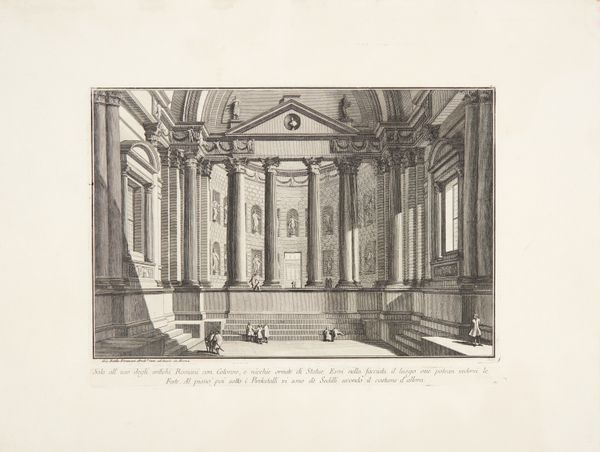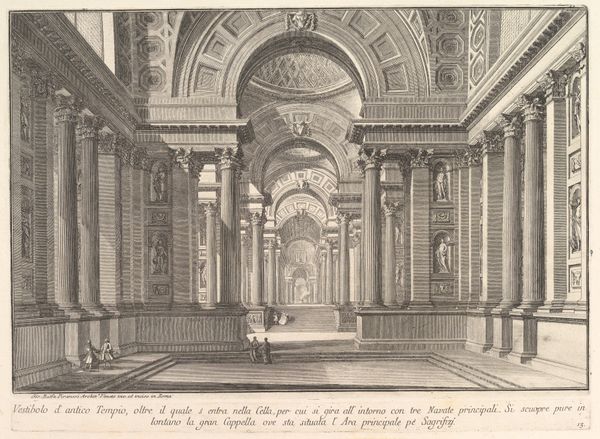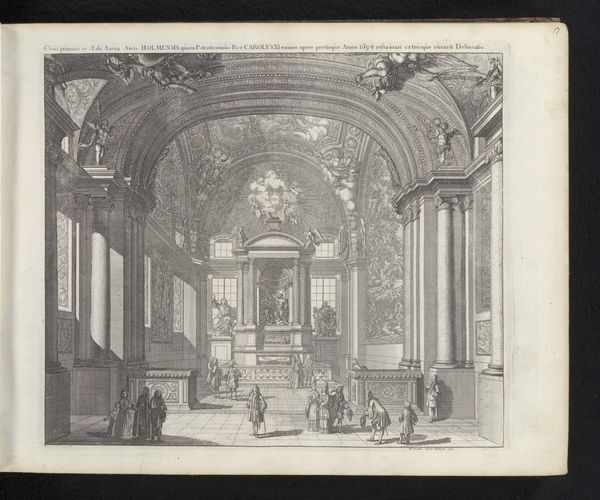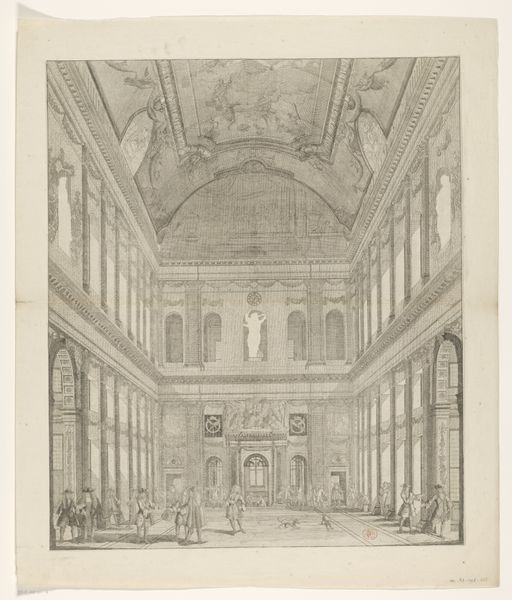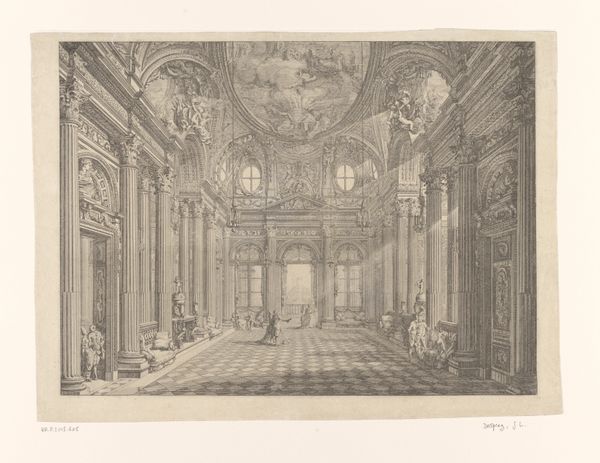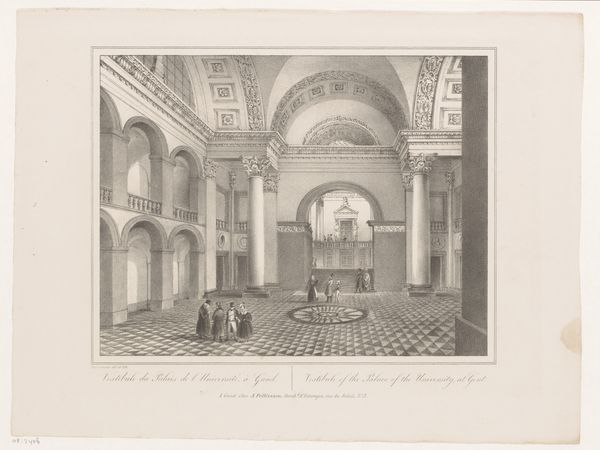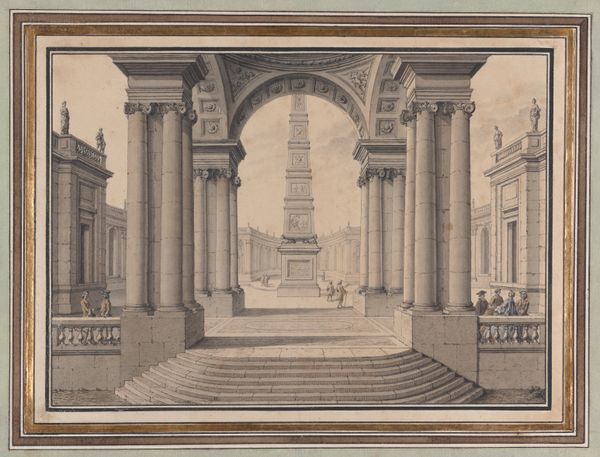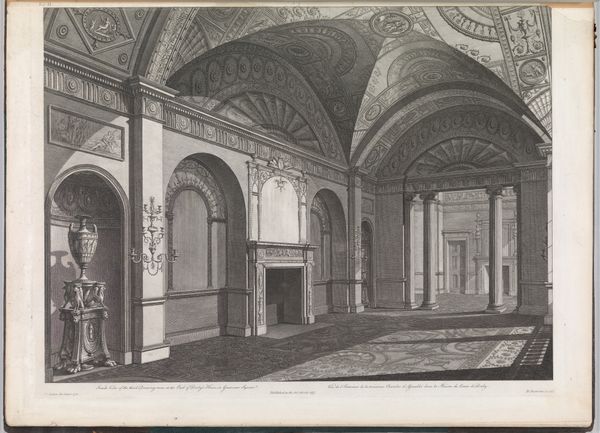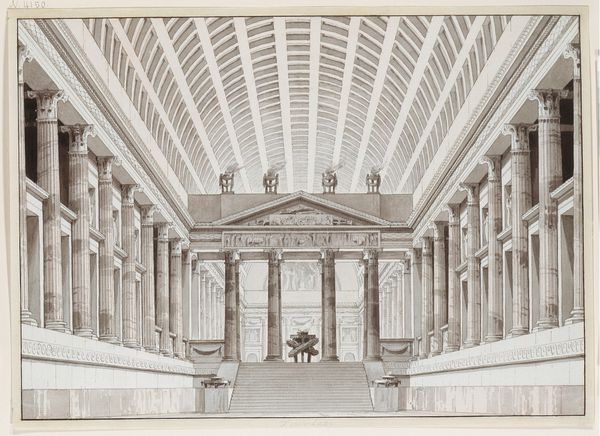
drawing, print, etching, paper, ink, engraving, architecture
#
drawing
#
baroque
# print
#
etching
#
greek-and-roman-art
#
paper
#
ink
#
ancient-mediterranean
#
history-painting
#
engraving
#
architecture
Dimensions: 9 3/8 x 14 1/16 in. (23.81 x 35.72 cm) (plate)10 5/16 x 14 5/16 in. (26.19 x 36.35 cm) (sheet)
Copyright: Public Domain
Curator: Standing before us is Giovanni Battista Piranesi's "Ancient Roman Interior," a print rendered in ink on paper and completed around 1743. It’s currently part of the Minneapolis Institute of Art's collection. Editor: The depth! Even in monochrome, the contrast gives a sense of vastness that pulls you into the scene. I’m immediately struck by how Piranesi uses lines to create the illusion of this immense architectural space. Curator: Piranesi was fascinated with Roman antiquity, and he used his artistic skill to document, interpret, and, in some ways, reimagine these historical settings for a contemporary audience. This particular image offers insight into how Romans adorned spaces for public activities. Notice the detail of the statues that the architecture contains; and people on the steps, in this rendering for entertainment of some type. Editor: Yes, those statuettes, each carefully placed within their niches, contribute to the structural harmony. There’s also something captivating about how the columns both support the ceiling and visually divide the space into manageable segments, it guides your vision around the entire piece. It uses dark etching in the left foreground to create contrast with the high, almost divine lightness above. Curator: Absolutely, and consider the function of prints during the 18th century. This print wasn't simply an artwork; it was a form of dissemination, a way to bring these interpretations of Roman grandeur into homes and studios across Europe. He makes the ancient world, its ideals and ambitions tangible, as source material for his audiences, perhaps influencing emerging thoughts of colonialism or power dynamics of Europe as centers of intellectual control. Editor: It’s the scale play that continues to interest me; those figures near the base juxtapose humanity with the imposing elements of the columns, ceilings, and the great height of windows allowing light. This relationship evokes human scale within these dominating, cultural constructions, with linear perspective used to add to the grand depth of design. Curator: Thinking about the context of its creation, this work underscores a renewed fascination with classical antiquity and represents Piranesi’s role in shaping how we perceived that historical period. It gives rise to romanticized thoughts of the past, but allows current architects a jumping point for emerging societal changes as seen by looking backwards. Editor: A final thought—it's the interplay of shadow and light across the piece and strong design, drawing attention to spatial organization that gives Ancient Roman Interior continued power, centuries later. The architecture itself dictates how one moves throughout the interior, from shadows into brightness and beckoning all to look forward.
Comments
No comments
Be the first to comment and join the conversation on the ultimate creative platform.

